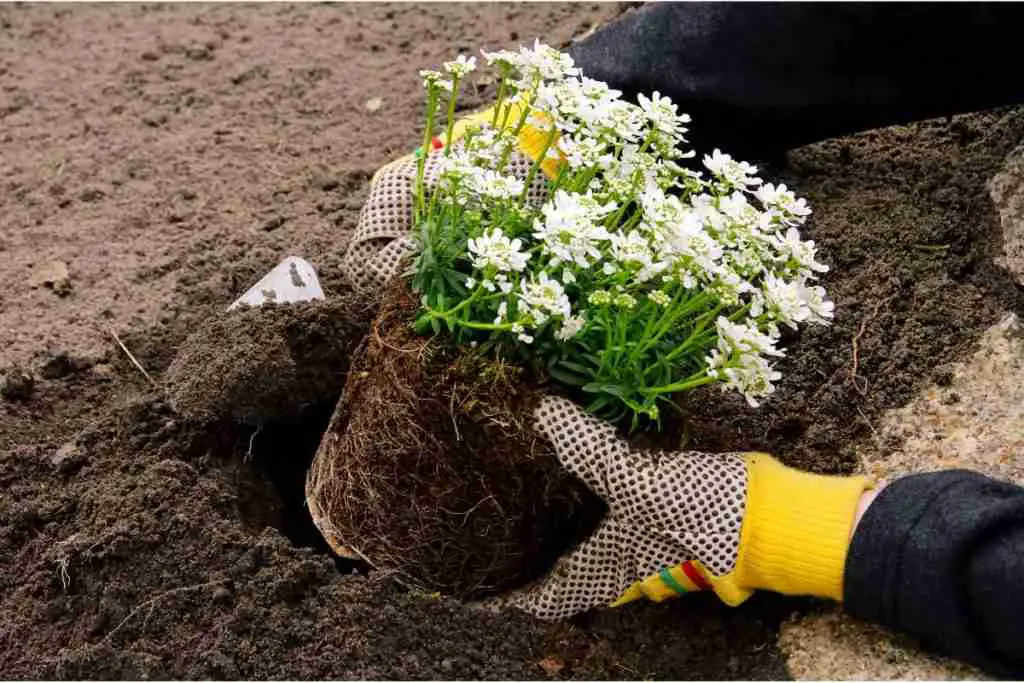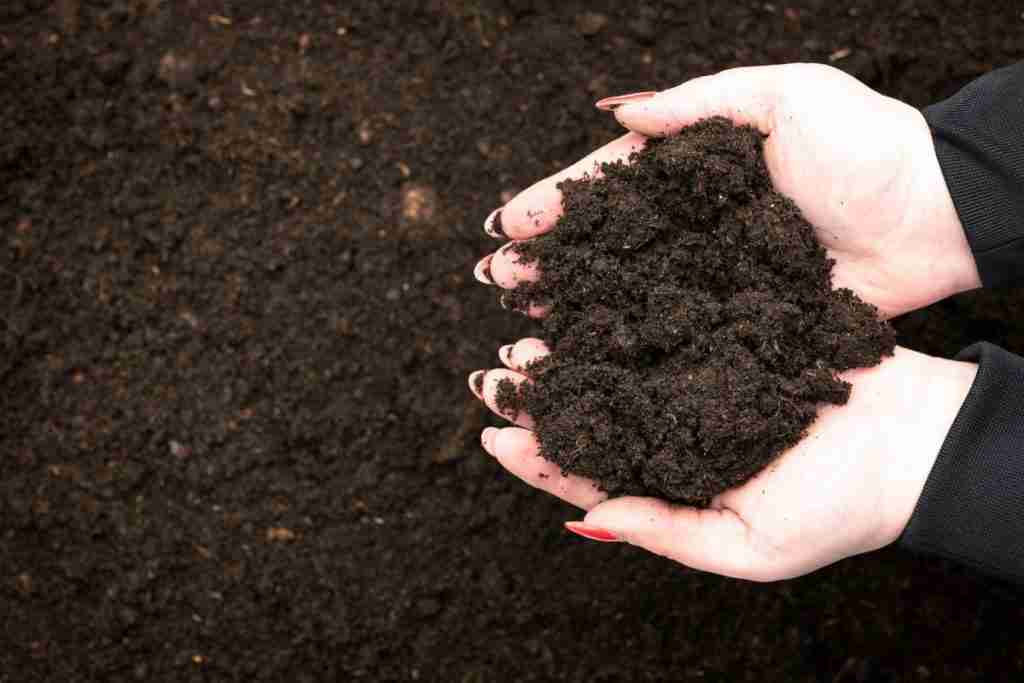
Do you have indoor potted plants that you want to protect and keep healthy and vibrant for as long as possible? If so, you should consider using diatomaceous earth for your potted plants; it is effective and easy to use as long as you know what you are doing.
Place diatomaceous earth directly on or in the soil of your potted plant, applying it to the base using either a dry or wet mixture. Always ensure your product is food-grade, and be sure to handle it with care and safety in mind.
Table of Contents
What Is Diatomaceous Earth?
Diatomaceous earth is a very interesting product, though most people are unaware of what it is composed of.
This product is tiny, soft, porous particles created from fossil remains of diatoms or ancient algae. Diatomaceous earth is often a fine white powdery substance that can be rich in nutrients and non-toxic.
The algae fossils in diatomaceous earth are often mixed with other sediments such as clay and minerals with different amounts of silica depending on the source.
How Is Diatomaceous Earth Used to Help Potted Plants?
Diatomaceous earth is an excellent resource for indoor gardeners to keep their plants safe, healthy, and thriving, thanks to all of the fantastic elements it possesses.
If you are considering adding this product to your garden toolbox, you won’t be disappointed, and here is a list of reasons why.
It Is an Efficient, Non-Toxic Insecticide
Diatomaceous earth is a non-toxic insecticide. While this product won’t kill any pests through harsh chemicals, it is a great way to keep little critters at bay because the tiny particles are sharp and rough, cutting, dehydrating, and killing insects that try to pass by.
Aids in Root Growth and Healthy Development
Because diatomaceous earth is rich in nutrients, adding this product to your potted plants will kill harmful insects and add some elements of healthy and essential minerals to your soil.
Reduces Mold Growth
Diatomaceous earth is very absorbent and has dehydrating abilities that will help keep your soil from retaining too much water, but it can also help it by destroying mold and mildew spores that begin to form.
Eliminates Unwanted Odors
Adding diatomaceous earth to your potted plants can also help eliminate or even prevent unwanted odors that are common in many house plants. These odors typically come from mildew, mold, fungus, or moss, and this product can eliminate the smells from all of them.
7 Great Tips for Using Diatomaceous Earth in Potted Plants
Now that you know why diatomaceous earth is an excellent addition to your indoor garden tools, let’s discuss a few great tips that will help you use the product to get the optimal benefits from it.
1. Wet it Down
Adding a little water to your plant and the soil before applying diatomaceous earth will help ensure that the powder sticks in place, allowing it to do its job without simply blowing away the next time someone walks by or a breeze blows in from an open window.
While this is a great product to use when trying to go all-natural, it isn’t very effective if it doesn’t stay where you apply it.
You can also add the powder into a spray container instead of wetting the plant (although smaller potted plants do better with the dry product). To do this, add four tablespoons of your diatomaceous earth to one gallon of water, pour it into a spray bottle and shake it up well.
2. Sprinkle Diatomaceous Earth with a Salt Shaker
If you don’t want to use a spray bottle with a diatomaceous earth mix, you can opt to put the product into a salt shaker. Using a salt shaker will make it easier to apply the diatomaceous earth directly onto the soil and help you spot apply.
3. Add it Right to Your Potting Mix
There are many reasons why adding diatomaceous earth to your potting mix can be beneficial to your potted plants. There is the benefit of all the great nutrients and minerals dispersing throughout the soil, as well as the fact it can keep plants from developing root rot by helping to aerate the soil and dry up excess moisture.
When you add diatomaceous earth directly into your plant’s soil, always ensure you are dispersing the product evenly, allowing it to work its magic throughout the pot.
If you do not apply the product evenly, you won’t see the same results all around the plant.
4. Use Caution When Applying


Yes, diatomaceous earth is a natural, non-toxic, and relatively safe product to use. It is a great alternative to harsh chemicals but can still cause some discomfort if you do not take the proper precautions when applying it.
- Wear gloves: Because diatomaceous earth is created from sharp, rigid, and rough particles, it can cause some skin irritation if it comes into contact with your bare hands. Using a good pair of gardening gloves is ideal when applying this product.
- Avoid getting it in your eyes: It’s important to either keep a safe distance when using this product or to wear eye goggles when applying. Diatomaceous earth can be very painful if it gets into your eyes and can even cause some pretty serious damage.
- Never inhale diatomaceous earth: Diatomaceous earth is rough and sharp, which causes problems for anyone who inhales it.
You should always make sure children and pets are not present while applying diatomaceous earth to your potted plants. Once the process is complete and the dust has settled, there is no waiting period, and your household can resume its normal daily activities.
5. Apply Diatomaceous Earth After Each Watering
The best thing about using diatomaceous earth on house plants is that you really can’t overdo it. So, adding more after you water your plants or whenever it looks like the product is fading away is safe and won’t harm your indoor garden.
While diatomaceous earth is relatively safe for your plants, keep it from sitting on top of the flowers and leaves of your plants to ensure they don’t start to dry out.
6. Always Use Food Grade Diatomaceous Earth
Food grade diatomaceous earth is much better for you and your plants. Food grade diatomaceous earth is only created from natural materials that have been smashed up into tiny particles without the aid of any added chemicals.
Non-food grade diatomaceous earth is typically mixed with other chemicals to make it more effective, including things like pesticides and metal particles.
You never want to apply non-food grade materials to your indoor plants because you should try to keep things as natural and healthy as possible.

7. Make Sure the Diatomaceous Earth Is Surrounding the Base of the Plant
No matter where you choose to put the diatomaceous earth–in the potting soil, inside a spray bottle, or in a salt shaker–make sure you always apply a decent amount of the mixture directly to the base of the plant.
Cover the entire base of the plant with an equal coating of the diatomaceous earth, as it will aid in discouraging bugs and other pests from crawling up the stems to get to the tasty leaves and flowers.
Diatomaceous Earth FAQs
Is Diatomaceous Earth Expensive?
Diatomaceous earth is relatively inexpensive, depending on the brand you buy and the type of product you are looking for. You will typically spend around $10-$20 per bag.
Is Diatomaceous Earth Harmful to Animals?
Food-grade diatomaceous earth is a non-toxic and safe product to use when you live with pets and can be beneficial rather than harmful when ingested. However, it is crucial to keep them away from it when it is airborne.
Can Humans Ingest Diatomaceous Earth?
If you accidentally ingest some of your food grade diatomaceous earth, don’t worry; this is a safe and edible product and can be beneficial to your gut.
What Types of Insect Pests Does Diatomaceous Earth Kill?
This product is a great natural way to keep the most common indoor pests from destroying your potted plants. Some examples of insects it will work on include: spider mites, ants, slugs, snails, grubs, fleas, pill bugs, beetles, fungus gnat larvae, fungus gnats, and more.
Final Thoughts
If you want a great addition to your potted plant care regime, you simply can’t go wrong with purchasing a quality, food grade diatomaceous earth product. This is a safe and easy way to keep your indoor plants from becoming dinner to a variety of bugs while providing a slew of other benefits at the same time.
